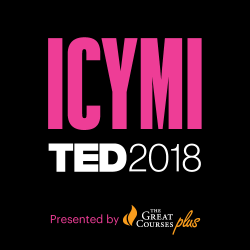 TED2018 hit its stride on day 3, with talks from explorers of space and oceans, builders of cities and bridges, engineers of the future and many more.
TED2018 hit its stride on day 3, with talks from explorers of space and oceans, builders of cities and bridges, engineers of the future and many more.
Here are some of the themes we heard echoing through the opening day, as well as some highlights from around the conference venue in Vancouver.
Are we alone in the cosmos? The universe is 13.8 billion years old and contains billions of galaxies — in fact, there are probably a trillion planets in our galaxy alone. People have long thought a civilization like ours must exist or should have existed somewhere out there, but British astronomer Stephen Webb sees another possibility: we’re alone. Thinkers have speculated about all the barriers that a planet would need to house an alien civilization: it would need to be habitable; life would have to develop there; such life forms would need a certain technological intelligence to reach out; and they’d have to be able to communicate across space. Rather than viewing the situation with sorrow and the cosmos as a lonely place, “the silence of the universe is shouting: we’re the creatures who got lucky,” says Webb. One cosmic visitor we just recently met can confirm something else is definitely out there — ‘Oumuamua, the first known interstellar object to pass through the Solar System. University of Hawaii astrobiologist Karen Meech introduces us to the mysterious object, which she says is a package from the nearest star system 4.4 light years away, having traveled on a journey of more than 50,000 years. She believes it could be a chunk of rocky debris from a new star system; other researchers believe it may be something else altogether — evidence of extraterrestrial civilizations, or material cast off in the death throes of a star. “This unexpected gift has generated more questions than answers,” says Meech, “but we were the first to say hello to this visitor from our distant past.”
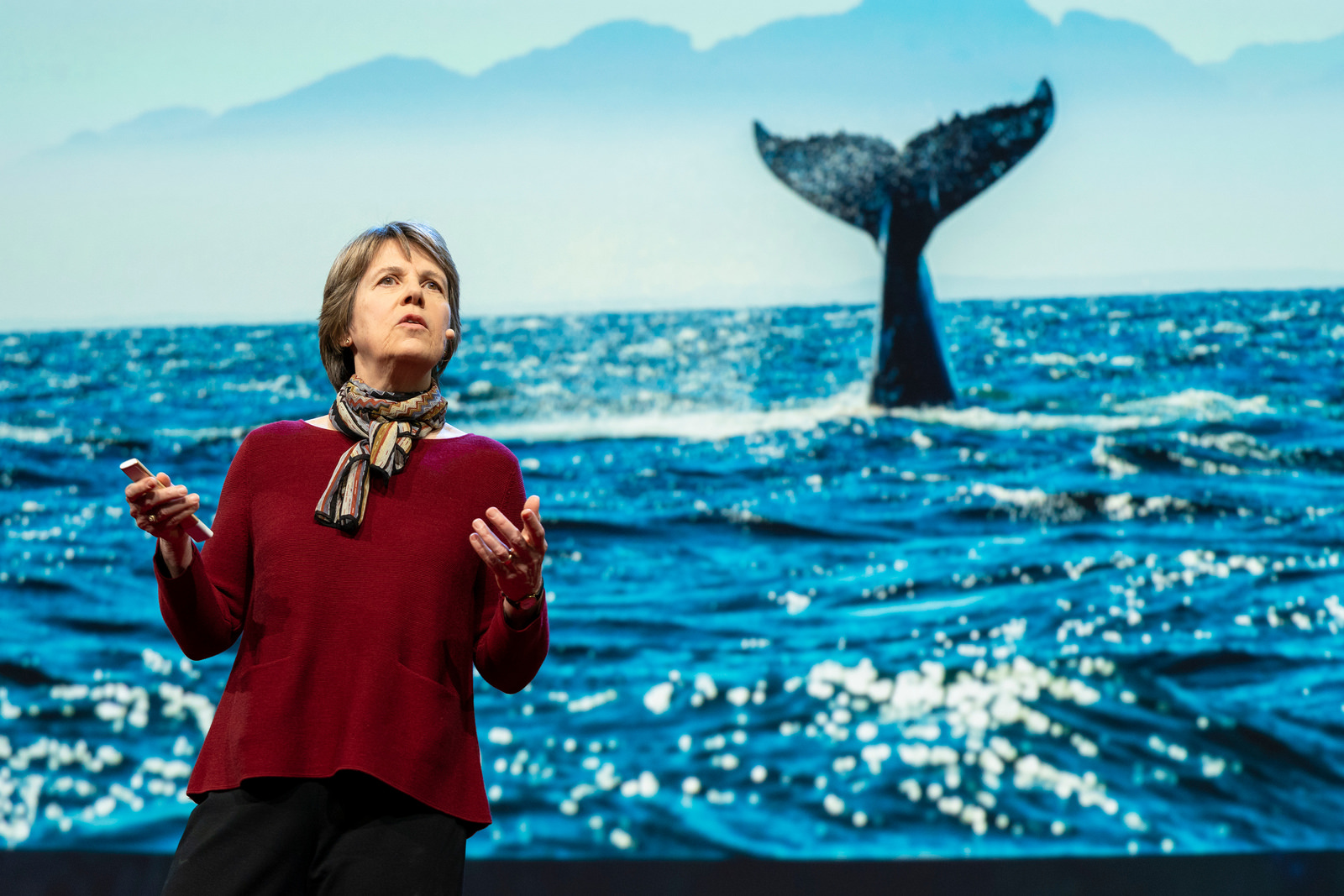
Penny Chisholm explains how an ancient, ocean-dwelling cyanobacterium — Prochlorococcus — could inspire us to break our dependency on fossil fuels. (Photo: Bret Hartman / TED)
Ocean explorers. Prochlorococcus is an ancient ocean-dwelling cyanobacterium that Penny Chisholm, a biological oceanographer at MIT, discovered in the mid-1980s. It’s the most abundant photosynthetic cell on the planet and Chisholm believes that it could hold clues for sustainable energy in its genetic architecture. With a gene pool four times the size of the human genome but 1/100th the width of a human hair, this engineering masterpiece might inspire solutions to break our dependency on fossil fuel. If we hope to unlock the wonders of Prochlorococcus in the Age of Amazement, we’re going to need to protect the world’s waters first. Enric Sala, a marine ecologist and National Geographic Explorer-in-Residence, proposes the creation of a giant high seas reserve. Falling outside of any single country’s jurisdiction, the high seas are the “Wild West” of the ocean and until recently, it was difficult to know who was fishing (and how much). Satellite technology and machine learning now enable the tracking of boats and revenue, revealing that practically the entire high seas fishing proposition is misguided. In response, Sala advocates for creating a reserve that would include two-thirds of the ocean, protecting the ecological, economic and social benefits of our waters.
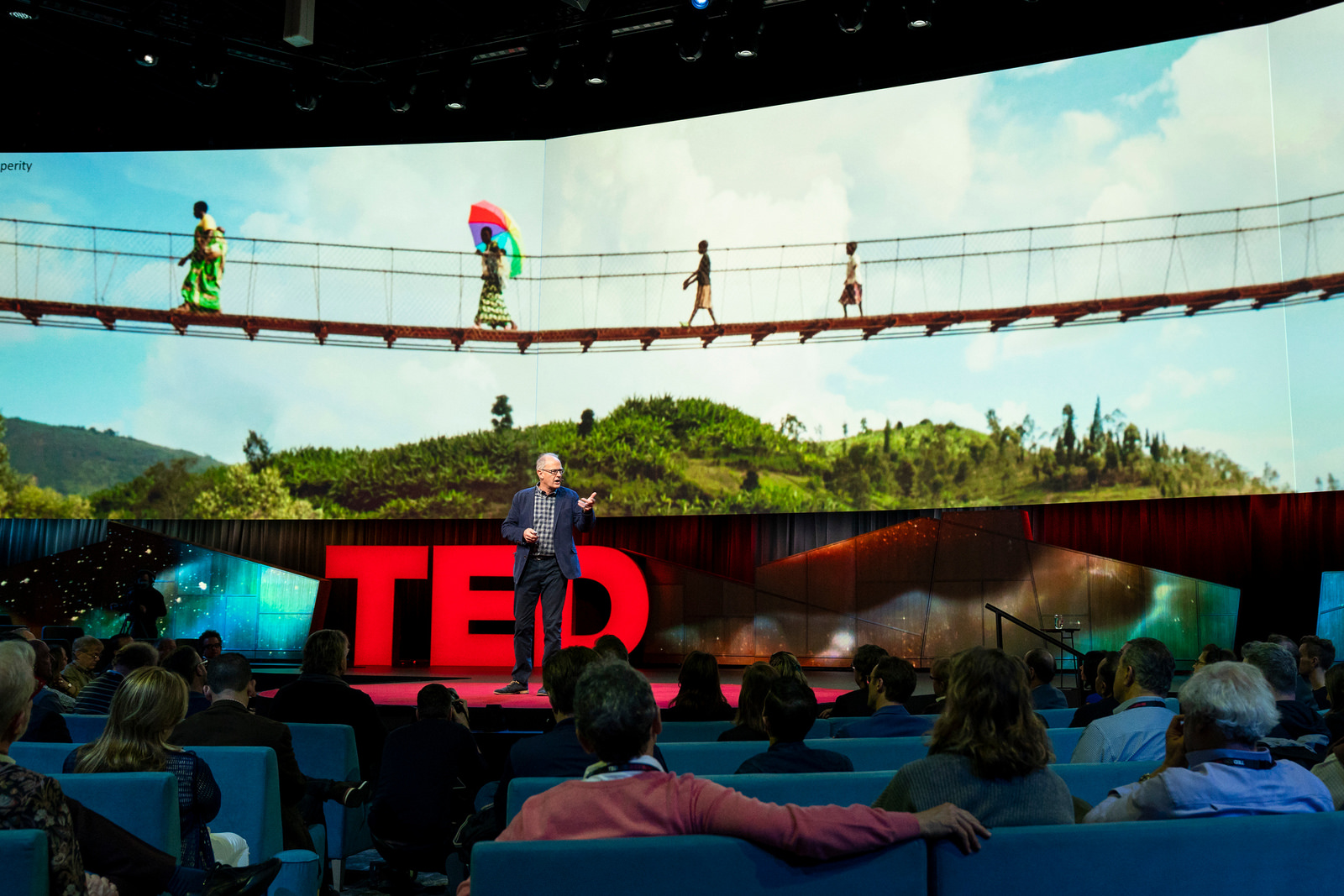
Bridges reveal something about creativity, ingenuity; they even hint at our identity, says engineer Ian Firth. (Photo: Bret Hartman / TED)
How we’re shaping (and reshaping) the built environment. TED is known for its fair share of tech wizardry, where innovation happens at the scale of microns. But our built environment is in need of some love in the Age of Amazement as well. Architect and Columbia University professor Vishaan Chakrabarti highlights the creeping sameness in many urban buildings and streetscapes throughout the world. This physical homogeneity — stemming from regulations, automobiles, accessibility and safety issues, and cost considerations, among other factors — has resulted in a social and mental one as well. Let’s strive to create cities of difference, magnetic places that embody an area’s cultural and local proclivities, exhorts Chakrabarti. One great way to beautify a city: an elegant, distinctive bridge! Ian Firth, an engineer whose work includes spans all over the world, including the 3.3 kilometer-long suspension bridge over the Messina Strait in Italy, talks about the connectivity that makes them special pieces of infrastructure. “They reveal something about creativity, ingenuity; they even hint at our identity,” he explains. Although they fall into only a few types, depending on the nature of their structural support, bridges hold great potential for innovation and variety is tremendous. “Bridges need to be elegant, they need to be beautiful,” Firth says.
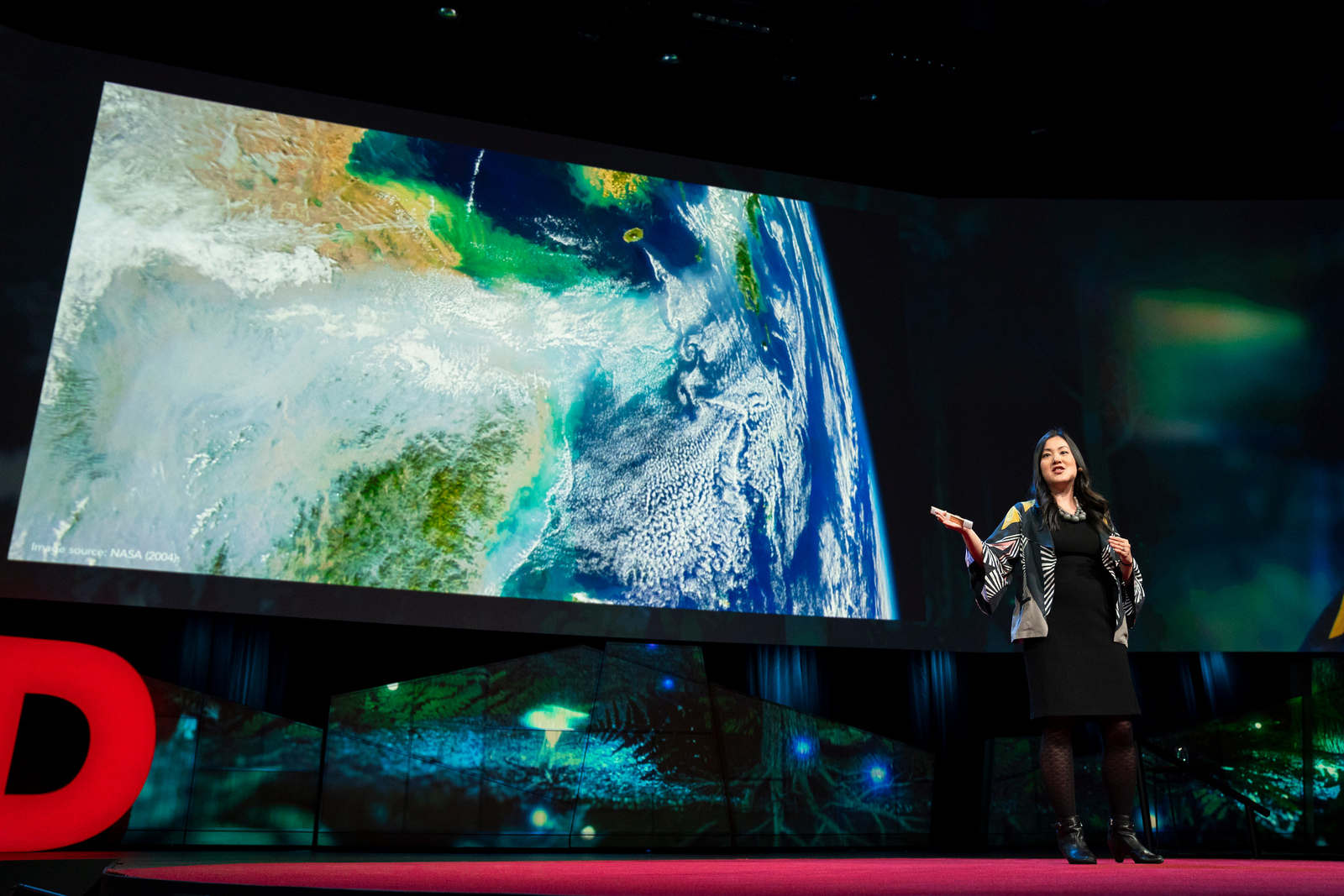
Angel Hsu shows us that real change is afoot in China’s, as the country’s energy initiatives have unexpectedly placed it at the vanguard of the fight against pollution and climate change. (Photo: Bret Hartman / TED)
Pollution problems — and solutions. Iconic images of skylines buried in clouds of smog ensured China’s notoriety as one of the world’s biggest polluters. But Angel Hsu shows us that real change is afoot in China’s, as the country’s energy initiatives have unexpectedly placed it at the vanguard of the fight against pollution and climate change. In 2011, when Hsu began conducting her research, China’s own environmental data — specifically for fine particulate matter, or PM2.5 — was kept secret. But thanks to citizen activism, pollution’s hazardous impacts on human health skyrocketed into China’s consciousness. The emerging zeitgeist grabbed the government’s attention. Recognizing China’s toxic reliance on fossil fuels, they pulled the plug on more than 300,000 coal plants, and began feverishly developing alternative energy. Although China must still address its coal problem abroad, its efforts at home (although uncertain) could impact global pollution — and China’s massive carbon footprint — in a major way. While cutting down on pollution is good, removing harmful greenhouse gases from the atmosphere would be even better. The concentration of CO2 in today’s atmosphere is a staggering 400ppm, but we’re still not cutting emissions as fast as we need to, according to chemical engineer Jennifer Wilcox. So we need to pull CO2 back out of the atmosphere — a strategy known as negative emissions. The technology to do this already exists: a device known as an air contactor uses CO2-grabbing chemicals in solid materials or dissolved in water to pull the gas out of the air, sort of like a synthetic forest. What makes this process tricky, though, is that it’s energy-intensive, which drives costs up or, depending on the type of energy used, ends up emitting more CO2 than is captured. Several companies are working on making the process more cost-effective using a variety of techniques, as well as solving other problems of carbon capture like how and where we should build these “synthetic forests.” And in a truly mind-blowing talk, applied engineer Aaswath Raman explains how the next great renewable resource might be … the cold of space. “What keeps me up at night is that the energy use for cooling is expected to grow six-fold by the year 2050,” he says. “The warmer the world gets, the more we are going to need cooling systems.” He’s exploring a potential solution that leverages a cool fact about infrared light and deep space.
Untraditional storytellers. Three TED speakers evoked storytelling in their talks — perhaps that’s not so unexpected, but what was surprising was there wasn’t a writer, musician or filmmaker among them. Game designer David Cage entreated the audience to think of videogames as more than pixelated shooting ranges or mindless time-fillers. “I’ve always been fascinated with the idea of recreating the notion of choice in fiction,” he says. “My dream is to put the audience in the shoes of the protagonist, let them make their own decisions, and by doing so, let them tell their own stories.” While playing, gamers also get the chance to enjoy two tremendously liberating qualities not usually found when reading a book: personal autonomy and flexibility. Veteran architect and Pritzker winner Renzo Piano — who is responsible for such indelible buildings such as Paris’s Centre George Pompidou, the New York Times building, and London’s The Shard — took audience members through his life’s work and his thinking. He too views himself as a storyteller. But while Cage concentrated on the narrative aspects of that role, Piano extolled the love, happiness and other emotional reactions that beautiful structures evoke in all of us. And the most surprising of today’s storytellers? Your fingerprints — or, more specifically, the molecules in your fingerprints, according to analytical chemist Simona Francese: “Molecules are the storytellers of who are we and what we’ve been up to. We just need to have the right technology to make them talk.” Francese and a team at her lab at the UK’s Sheffield Hallam University have spent nearly a decade perfecting the process to identify as much as 1,000 molecules in a single fingerprint — and this technology is now being used by the police in Europe to catch criminals.
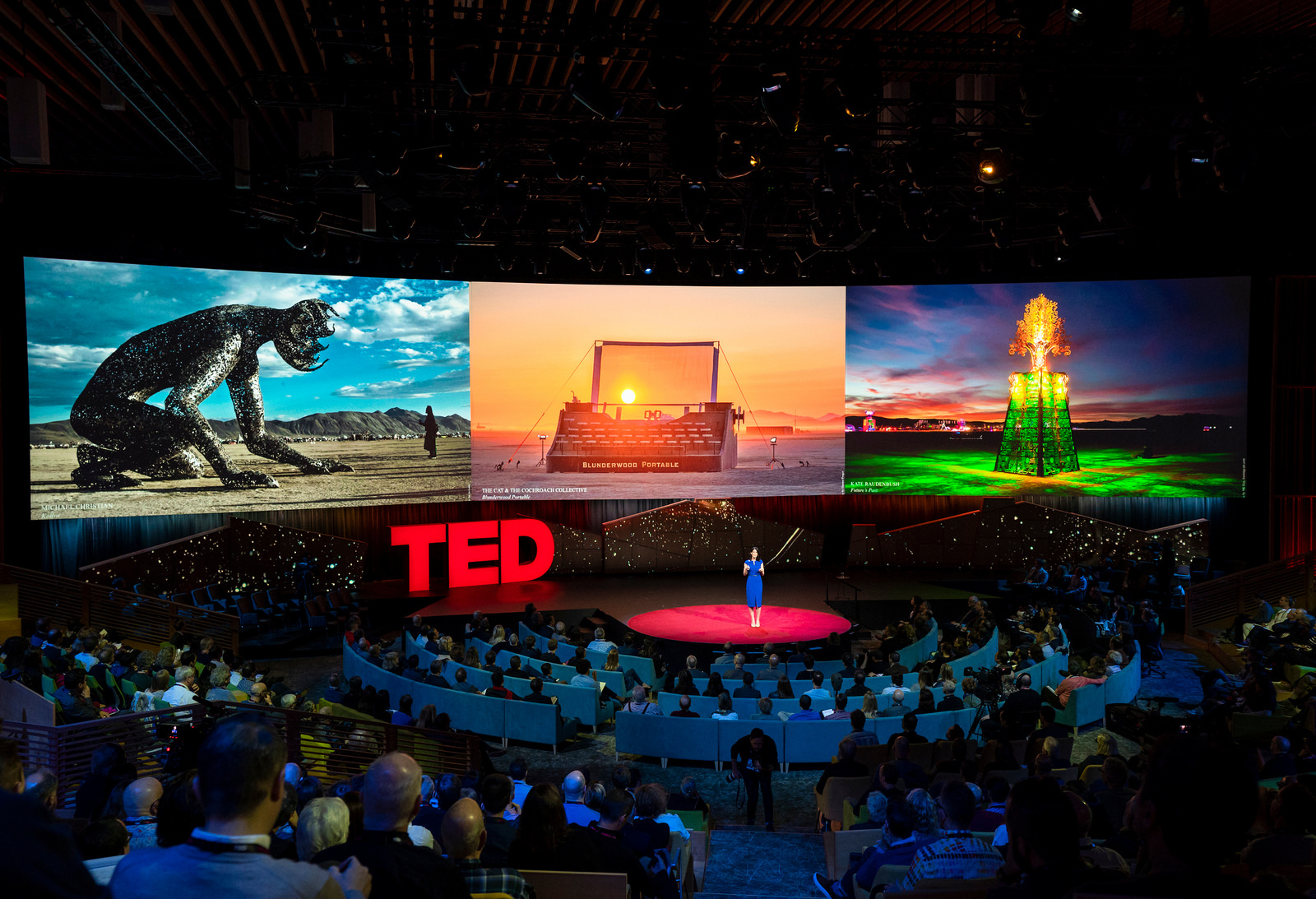
Nora Atkinson invites us on a trip to Burning Man, to see the wonderful art that’s constructed and burned — and never sold — there each year. (Photo: Lawrence Sumulong / TED)
Love, actually. In 2017, Smithsonian American Art Museum craft curator Nora Atkinson went to Burning Man in Nevada for the first time, and what she found was an artistic experience like no other. Every August, more than 70,000 people trek to the desert and engage with 300+ installations, sculptures and structures. None of the pieces are for sale (all are burned or taken away at week’s end), and anyone can make art. As a result, creativity there is driven by passion, not profit. Burning Man art is “authentic and optimistic in a way we rarely see anywhere else,” and it encourages, even demands, interaction and investigation. “What is art for,” Atkinson asks, “if not this?” Love was also on the mind of speaker Kai-Fu Lee. The longtime technology investor and executive admits love was absent from his career-minded trajectory until he was diagnosed with cancer (but shares he is now in remission). He feels it’s been similarly overlooked in discussions about technology and the future. “Love is what differentiates us from AI,” he says. “Despite what science fiction movies may portray, I can tell you responsibly that AI programs cannot love.” Lee urges people to think of how human love, compassion and technological brilliance can co-exist and help us create better, more connected lives. Musician Luke Sital-Singh brought down the house — and made TED curator Chris Anderson wipe his eyes — by playing and singing a beautiful composition called “Killing Me.” He wrote the song from the point of view of his grandmother, who has had to figure out how to live without her soulmate, Sital-Singh’s late grandfather, even as she experiences the joys of her family and their new members and accomplishments. He sang, “Oh you won’t believe, the wonders I can see/This world is changing me, but I’ll love you faithfully.” And while soft-spoken climber Alex Honnold, the day’s final speaker, didn’t use the L-word, it came through loud and clear as he talked about his record-setting, free-solo climb of El Capitan in 2017. He spoke about his intense mental preparation for the feat — he took months to memorize every handhold and foot placement, so the climb would come naturally and automatically to him. Of that day, he recalled, “With six hundred feet to go, it felt like the mountain was offering me a victory lap. I climbed with a smooth precision and enjoyed the sounds of the birds swooping around the cliff. It all felt like a celebration.”
Workshops aplenty. TEDsters had 19 workshops to choose from on day 3. Adam Savage had attendees create armor helmets out of laser cut corrugated cardboard. Angelica Dass guided attendees through painting self portraits, asking people to revisit their childhood art class — specifically the moment they learned about the connections between the colors of their skin and their race. And OK Go led attendees to build an orchestra out of random objects around the room … like suitcases, wine bottles, cans and PVC pipes.